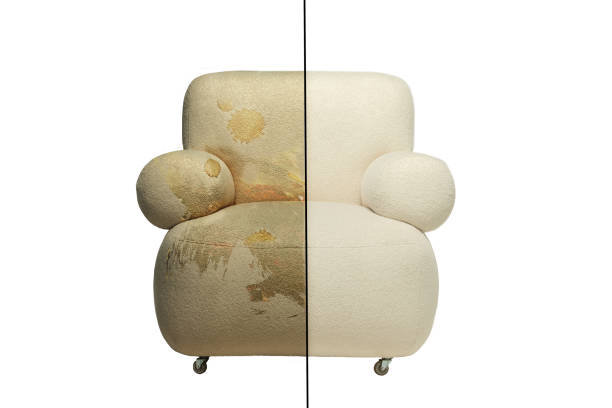In the realm of garment care, mastering the art of dry cleaning can be a game-changer, especially when it comes to dealing with persistent spots and stains. Whether you’re a seasoned dry cleaning enthusiast or a novice looking to enhance your laundry skills, this guide will walk you through six essential steps to ensure your clothes emerge spotless and refreshed.

Step 1: Identify the Stain and Fabric
Before embarking on your dry cleaning journey, it’s crucial to identify the stain and understand the fabric of the garment. Different stains demand specific treatments, and fabrics may require varying levels of care. For example, silk and wool are more delicate than cotton or polyester. Take the time to read the care labels on your garments to determine the best approach.
Step 2: Spot Testing
To prevent any unwarranted damage to your clothing, always conduct a spot test before diving into the deep cleaning process. Choose an inconspicuous area, such as the inside seam, and apply a small amount of the dry cleaning solution. If there are no adverse reactions like color fading or fabric damage, proceed with confidence.
Step 3: Pre-Treat the Stain
Addressing stains promptly is key to successful dry cleaning. Begin by gently blotting the stain with a clean, dry cloth to remove any excess residue. Next, apply a small amount of the dry cleaning solution to the stain, working from the outer edges toward the center. Use a soft brush or cloth to gently agitate the solution, allowing it to penetrate the fibers.
Continue doing this until the stain starts to fade. For oil-based stains like lipstick or grease, sprinkle a pinch of talcum powder on the stain before applying the dry cleaning solution to absorb excess oils.
Step 4: Invest in a Quality Dry Cleaning Kit
To ensure optimal results, equip yourself with a quality dry cleaning kit. These kits typically include a stain remover, cleaning solution, and a brush. The cleaning solution is specially formulated to dissolve and lift stains without damaging delicate fabrics. A reliable kit can be a valuable ally in your quest for spotless garments.
Step 5: Follow Proper Dry Cleaning Techniques
Executing proper dry cleaning techniques is paramount to achieving the best results. When applying the dry cleaning solution, work in gentle, circular motions, and avoid excessive rubbing to prevent wear on the fabric. For tougher stains, consider letting the solution sit for a few minutes before blotting or gently scrubbing. Patience is key when it comes to achieving a thorough clean.
Step 6: Air-dry or Professional Dry Cleaning
Once you’ve successfully treated the stains, it’s time to decide whether to air-dry the garment or seek professional dry cleaning services. For delicate fabrics like silk and wool, it’s often best to air-dry to prevent any potential damage from the dry cleaning chemicals. Lay the garment flat on a clean, dry towel, reshaping it to its original form, and allow it to air-dry thoroughly
Alternatively, if the garment requires a more extensive cleaning or if you’re uncertain about the fabric’s reaction to the dry cleaning process, consider taking it to a professional dry cleaner. These experts have the knowledge and equipment to handle a wide range of fabrics and stains, ensuring your garments receive the care they deserve.
Conclusion
Mastering the art of dry cleaning is a valuable skill that can prolong the life of your garments and keep them looking pristine. By following these six steps – identifying the stain and fabric, spot testing, pre-treating the stain, investing in a quality dry cleaning kit, following proper techniques, and deciding on air-drying or professional services – you can confidently tackle spots and stains at home. With the right approach and a touch of patience, your clothes will not only be clean but also well-preserved for the long haul. Embrace the art of dry cleaning, and say goodbye to stubborn stains!
FAQ
What is Dry Cleaning?
Dry cleaning is a specialized cleaning process that uses a solvent, typically perchloroethylene, to clean fabrics and garments without the use of water. It is particularly effective for delicate fabrics or garments that may be damaged by traditional washing methods.
How does Dry Cleaning differ from Traditional Washing?
Unlike traditional washing, which uses water and detergent, dry cleaning uses a chemical solvent to remove stains and dirt from fabrics. This method is gentler on delicate fabrics, helps prevent shrinkage, and is effective in removing oil-based stains that may be challenging for water-based washing systems.
